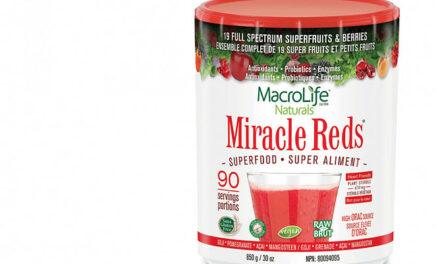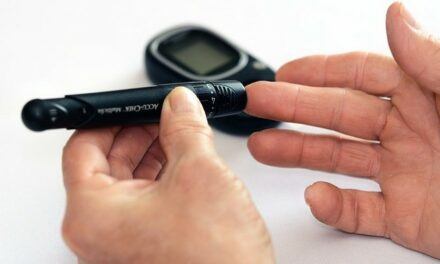Most of us have used or at least heard about hydrogen peroxide as a go-to wound cleaner valued for its antifungal, antiviral, and antibacterial properties. It has been a popular disinfection solution for many many years. However, it is no more considered the best chemical agent for wounds, and there are many other products that do a better job of helping wounds to heal fast than hydrogen peroxide. Recent scientific research has revealed drawbacks and potential side effects that challenge its effectiveness as a go-to wound disinfectant. In this comprehensive guide, we will explore the reasons why hydrogen peroxide should not be used on open wounds and provide insights into its appropriate usage. We will also discuss alternative wound-cleaning methods to ensure safe and efficient wound care.
In this article, I will take you through the scientifically proven reasons why you should not use hydrogen peroxide on open wounds as the ‘go-to’ wound cleaner anymore. And, if so, when to use hydrogen peroxide on a wound.
Before addressing the question of the article, let’s find out more about hydrogen peroxide and how it evolved over the centuries.
What is Hydrogen Peroxide?
In 1818 hydrogen peroxide was discovered by Louis Jacque Thenard.
Inorganic peroxide is a hydrogen peroxide that has a covalent bond. The covalent bonding plays a role as an oxidizing agent, an antimicrobial agent, an apoptosis inducer, a genotoxin, a bleaching agent and reactive oxygen member species. Due to this chemical compound, hydrogen peroxide cans appear as a colourless liquid from more than 60% of hydrogen peroxide with a stabilized and aqueous solution.
Hydrogen peroxide may bother the eyes and mucous membranes. So, it should be left out of children’s access all the time.
Hydrogen peroxide is used in food production, chemical production, disinfecting tools, oral care products, wound care products, gardening products and textiles. Hydrogen peroxide may also be available as over-the-counter first aid antiseptics and is commonly utilized as a bleaching agent in several industries.
This chemical compound is tasted bitter at room temperature, and it looks colourless.
In the natural air, small quantities of hydrogen peroxide easily vapour and gaseous. When hydrogen peroxide is unbalancing or stabilizes, it is ready to decompose on oxygen and water to discharge the heat.
Hydrogen peroxide is such an energetic oxidizing agent, and when it comes from organic product affect spontaneous combustion even though it’s non-flammable.
At low concentrations, hydrogen peroxide is used for medical production, hair lightning and clothing. Opposite to lower concentrations, it is used for alleviating textiles and paper, constructing rubber foam and organic chemicals and for ingredient rocket gas.
Tip: We have covered the current approach to diabetes-related wound care and treatment already.
Hydrogen Peroxide Advantages
Hydrogen peroxide has various advantages.
| No. | Advantages |
|---|---|
| 1 | Natural and safe purification material with antifungal, antiviral, and antibacterial properties. |
| 2 | Affordable and widely accessible for home use. |
| 3 | Effective dye-removing agent and bleach for various surfaces and materials. |
| 4 | Topical antiseptic for wound purification, supporting local oxygen production. |
| 5 | Reported to influence biological behavior through membrane potential alterations. |
1. It is a natural and safe purification material because of hydrogen peroxides’ antifungal, antiviral and natural antibacterial properties. It can be a very effective agent for natural purification material and non-toxic for home uses.
You need to take good care of this chemical product, so keep it away from family and pets as can be harmful to them, though.
2. Hydrogen peroxide comes with a ‘cheaper’ price, so anyone can purchase it to store it in their house. That’s why people use it to clean – to keep germs and bacteria away, as using it for cleaning bathroom titles.
3. H202 is a safe and chemical-free dye-removing material. It can clear away dye from any kind of surface and material, such as clothes, shower walls, floors, and so on. Hydrogen peroxide is a strong oxidizer that reacts with several compounds.
4. Hydrogen peroxide is a topical antiseptic used in wound purification which hits pathogens through oxidation bursts and local oxygen production.
5. Hydrogen peroxide has been reported to control biological behaviour through multiple mechanisms: alterations of membrane potential, and changing intracellular redox balance, which concluded in activation or inactivation of different signalling transduction mechanisms.
Tip: Guess if a wart is a fungal or viral infection? If you can’t, just follow the link to read the article.
Hydrogen Peroxide Disadvantages
Here are the list of limitations.
| No. | Limitations |
|---|---|
| 1 | Limited oxidizing and disinfecting abilities at active concentrations for some applications. |
| 2 | Quick transformation into water and oxygen in the presence of oxygen radicals. |
| 3 | Not as potent a disinfectant as other alternatives like ozone, bromine, or chlorine. |
| 4 | Potential side effects like skin irritation, burns, blisters, hives, and redness. |
| 5 | Damage to healthy cells, slowing down the wound healing process. |
| 6 | Risk of oxygen embolism and potential harm to blood vessels. |
| 7 | Decline in medical acceptance for wound care due to negative effects. |
1. The primary disadvantage of Hydrogen Peroxide is its small oxidizing and disinfecting abilities of it at active concentrations of about a few milligrams per liter, which are required for swimming pool disinfection.
2. Another big drawback of it is the fast transformation of hydrogen peroxide during the presence of oxygen radicals to water and oxygen. This problem needs an additive material to control the stabilization of hydrogen peroxide instead of its quick decomposition, which helps in delaying the transformation and hence maintaining the disinfection ability.
3. Also, if we compare hydrogen peroxide with ozone, bromine or chlorine, we would find that hydrogen peroxide is not a stronger disinfectant than any of them. For instance, the disinfection of swimming pools by hydrogen peroxide is regularly not accepted, until it gets mixed with other additives such as ammonia quart salts, ozone or silver salts.
Tip: We previously found out that partially hydrogenated coconut oil is ‘unhealthy’, while other types of coconut oils are considered healthy. Hydrogenated oils shouldn’t be a part of your food list, especially if you prefer to stick with diabetes-friendly food.
When To Use Hydrogen Peroxide?
There are many uses of hydrogen peroxide. Instead of using hydrogen peroxide as first aid to clean a wound, there are a lot of uses that most people may don’t know.
Hydrogen peroxide also can be used as a mouth rinse to treat gingivitis which can clear away mucus and relieve minor mouth irritation.
According to a study by Contemporary Clinical Dentistry, we can use hydrogen peroxide to disinfect dental tools, retainers and toothbrushes! Instead of throwing away your toothbrush, you can just rinse your toothbrush with hydrogen peroxide, and it’s also proven that rinsing with it is better than rinsing with water.
Besides using it on dental instruments, hydrogen peroxide also can be used to bleach to make your shirt clean and make your nail healthier. Not just been using or placed in safety aid, but it can be used for the purification of your home.
So, this shows there are multiple functions of the chemical compound and not just for the purification of wounds.
1. To clear away pit stains – abolish it by making a solution 2/3 of dish-washing and 2/3 of hydrogen peroxide after that use for dye about 60 minutes. Then, using cold water to wash and dry it.
2. Boost your laundry – when washing white clothes, add a cup of hydrogen peroxide in the washing machine. Apply as a ‘dye’ as the need to use for the color test, if you need to use dye on dim clothes.
3. Mouthwashes – use for dental hygiene.
To kill germs, and make sure you dilute the solution with ½ water and ½ hydrogen peroxide. Wash for 60 seconds and spit it out. It also can help with teeth whitening.
Tip: Make sure you do not swallow the mouth wash!
4. Antiseptics – repair a burning, scrapes and avoid the skin infection of minor cuts. Support on cut out dead skin cells and clean the area.
Tip: You shouldn’t use hydrogen peroxide in deep cuts, wound or bruises.
5. Grow mushrooms – support combat mold bug that can destroy the mushrooms. Add a few drops of hydrogen peroxide to kill the mold and fungus.
6. Grow your garden – hydrogen peroxide can support a plant development to give more absorb of oxygen to get nutrients.
7. Purification the dishwasher – directly applies the hydrogen peroxide and wipe it out. Mixed the solution of baking soda, and essential oil and hydrogen peroxide will give an excellent result for dishwasher.
8. Keep food fresher – bathed fruits and vegetables with hydrogen peroxide to keep them fresher. But remember, you need to wash it before eating.
Here are the key applications in a table for you.
| No. | Application |
|---|---|
| 1 | Mouth rinse for gingivitis and minor mouth irritation relief. |
| 2 | Disinfecting dental tools, retainers, and toothbrushes. |
| 3 | Bleaching and stain removal from clothes, shower walls, etc. |
| 4 | Topical antiseptic for minor burns, scrapes, and cuts. |
| 5 | Supporting plant development in gardening. |
Tip: Essential oils have many other benefits. They can help with diabetes.
When Not To Use hydrogen peroxide?
This chemical compound no longer is used as a ‘go-to’ disinfecting agent by professional medical practice.
The discourage for its use on wounds is because of the problems it causes on wounds, so the hydrogen peroxide is not any longer considered ‘curative’ on wounds but gives a negative effect.
Research suggests there are a few complications, for example, dermatitis (skin infection), burns, blisters, hives, redness and itchiness and irritation all can be an effect of hydrogen peroxide.
Tip: Fever is an indication of an infection, which can sometimes cause hallucinations.
The curative effect can be translated into acne treatment and other skin issues, or diseases. It can outweigh your skin.
The other side effect is the damage to your eyes, fatality when swallowed, and the potential to get cancers.
Yes, hydrogen peroxide can heal wounds, but it can give the above side effects. The chemical reaction of hydrogen peroxide between bacteria to kill the bacteria during a wound or cut can cause skin irritation and skin infection.
Recent research has shown that hydrogen peroxide not only kills bacteria but also targets the catalase enzyme present in all cells upon contact. Unfortunately, this can lead to the destruction of healthy cells and hinder the natural healing process. Moreover, the formation of oxygen bubbles during the hydrogen peroxide reaction can cause an oxygen embolism, obstructing blood flow in some instances when the bubbles enter the blood vessels.
Since 2016, the hydrogen peroxide is not considered a ‘must-have’ solution for medical practice for wound healing, and no longer recommended for wound care regardless of how deep the wound is.
So, hydrogen peroxide seems to have gone the same path as Mercurochrome: once praised and then scrutinized and abandoned.
Using the water for washing the wounds, maybe the application of some disinfectant and knowing the early symptoms of tetanus seem to be the modern approach to wound care. This approach alone can’t be a success in the later stage but only successful in early-stage as without risk, if not vaccinated as curative of tetanus.
Hydrogen peroxide can make the cellulose, lines and liquids cannot be processed, some endoscopes or medical devices with the long or narrow lumens cannot be processed at this time, required the synthetic packaging and special container tray and may be toxic at levels greater than 1ppm TWA.
It can be useless in high tension and with substantial curves of more than 20 degrees, not be used for obese patients and shouldn’t be used for wet wounds at all cost.
The drawbacks of hydrogen peroxide make it unsuitable for wound care:
| No. | Complications |
|---|---|
| 1 | Skin irritation, infection, and damage to healthy cells. |
| 2 | Oxygen embolism, blocking blood flow, and potential harm to blood vessels. |
| 3 | Negative impact on wound healing process, particularly in elderly individuals. |
| 4 | Potential eye damage, fatality if swallowed, and risk of cancer. |
| 5 | Slow curative effect and potential side effects like dermatitis and itchiness. |
| 6 | Ineffectiveness in deep cuts, wounds, bruises, and wet wounds. |
Tip: Hyperbaric oxygen therapy is proven to help for many types of chronic slow-healing wounds.
What Can You Use On Wounds Instead Of Hydrogen Peroxide?
Besides using hydrogen peroxide, we can use a saline solution for washing our wounds.
Saline is a homogeneous solution mixture that contains more than one substance. Commonly saline that we know is sodium chloride which is salt at 0.85 to 0.9 that dissolved in 100ml of clean water.
Not only saline, but you also can use tap water to replace the hydrogen peroxide by holding the wound under the water flow. The longer, the better because for discharge the all the debris, bacteria and dirt.
Tap water contains chlorine that can kill bacteria.
But, strictly do not scrub the wound by using a washcloth as that can affect the wound and make the infection worse as the dermis of the skin will expose, allowing the diseases to spread. After washing away all the debris and dirt, clean the wound area with a cotton pad.
Then, treat the wound with an antibiotic, which is important to prevent infection.
Always use gloves; do not touch the wound directly because the outer dermis of human hands contain a lot of microorganisms that we can’t see with our naked eyes. Those microorganisms can easily spread infections without we realize it.
If you don’t have the gloves (or ideally medical gloves) make sure you wash your hands carefully with antibacterial soap or use hand sanitizes so the hand will have only up to 0.09 % bacteria that may be trying to transmit more infection to the wound.
The point is you can never sanitize your hands to make them 100% germ-free by washing it with anything.
Considering the limitations of hydrogen peroxide, it is essential to use alternative methods for wound care:
| No. | Alternative | Advantages |
|---|---|---|
| 1 | Saline Solution | A gentle and safe option for wound irrigation, promoting a clean wound bed. |
| 2 | Tap Water | Chlorine in tap water can aid in killing bacteria without harming the wound. |
| 3 | Antibiotic Ointment | Effective in preventing infection and facilitating wound healing. |
Tip: We have covered some valuable tips about choosing the best wound dressing product to speed-up wound healing.
Summary
Based on the fact and information above, it is clear that there are many functions of hydrogen peroxide, but besides all the good it can bring, hydrogen peroxide also can harm human.
Hydrogen peroxide can slow down the curative wound process and when an older people use it is most likely not effective (if not damage to the skin) because older people need more time to heal a wound than young people, as they (elderly) have a lower level of antigen for curation.
The normal of curative time is 3 days for making the wounds fully dry, but not too dry, as the moment the surface of the wounds gives a response by generating new cells.
The current medical recommendation is to replace the use of hydrogen peroxide by using tap water and/or (ideally) a saline solution. Unlike hydrogen peroxide, these solutions can’t harm the wounds but only can wash the wound’s surface by removing the infection, blood or dust.
As medical research evolves, many innovative solutions have taken the former place of hydrogen peroxide when its come to wound disinfection and healing, giving better outcomes resulting faster and safer wound healing outcomes.
Tip: Negative pressure wound therapy works really well, supporting wound healing.
Tip: Pressure-relieving heal protectors, and heating mats can help to keep you away from pressure sores.









Thanks for this, Shani. I never considered what hydrogen peroxide contains. This is a really interesting read and an important topic to be raised actually. I must say my husband loves to use it still when any of us has a wound. Sometimes it’s good to have someone stop and say ‘why are we doing this and should we be doing this?’ Not everything is necessarily the best thing to do just because we have always done it! Clearly there are other equally effective disinfectants with less harmful properties.
Just curious, on the gardening front is it not harmful to insect life?
Thanks again for the comprehensive breakdown and advice!
You’re welcome, and thank you for your thoughtful comment and question regarding the use of hydrogen peroxide on open wounds. I’m glad to hear that you found the article to be interesting and an important topic to consider.
You brought up a crucial point about reevaluating our practices and questioning why we do certain things, especially when it comes to wound care. It’s true that sometimes, we may continue to use a certain method simply because it’s what we’ve always done, without considering the potential risks or more effective alternatives.
In the case of using hydrogen peroxide on wounds, while it may have been a common practice in the past, there are indeed other equally effective and less harmful disinfectants available. Sterile saline solution or simply washing the wound with mild soap and water are recommended methods for wound cleaning. These options are gentler on the tissues and do not pose the same risks of tissue damage and delayed wound healing as hydrogen peroxide.
Regarding your question about the impact of hydrogen peroxide on insect life, it’s important to note that hydrogen peroxide, when used as a disinfectant for wound care, is typically applied in small quantities directly to the wound and then rinsed off thoroughly. As such, it is unlikely to have a significant impact on insect life when used in this manner. However, it is always advisable to follow proper disposal guidelines for any medical products to prevent environmental contamination.
Once again, thank you for your thoughtful comments and curiosity. As an expert, my goal is to provide comprehensive information and advice to help individuals make informed decisions about their health and well-being.
If you have any more questions or need further information about wound care, disinfectants, or any other related topics, feel free to ask. We are here to support you with valuable insights.
Best regards.
Your credibility is in question. You really should read your own article. “ There was dumpling hydrogen peroxide can don’t kill the bacteria…”. What does that even mean?
Hello.
Thanks for raising your concerns.
We apologize for any confusion caused by the statement in my article. It appears there might have been an error or typo in the text, and we regret any confusion it may have caused.
To clarify and address your question, the correct statement should likely read as follows: “There was evidence suggesting that hydrogen peroxide can actually kill healthy cells and delay wound healing, as it may not effectively kill all types of bacteria.”
The use of hydrogen peroxide on open wounds has been a debated topic in the medical community. While hydrogen peroxide is known for its ability to kill bacteria, it is not always the best option for wound care due to certain drawbacks. Hydrogen peroxide can cause harm to healthy cells and tissues, leading to delayed wound healing and potential tissue damage. Additionally, it may not effectively eliminate all types of bacteria that can cause infections.
As a result, many healthcare professionals now recommend against using hydrogen peroxide on open wounds and instead suggest alternative wound-cleaning methods. These methods may include gentle cleansing with saline solution, or using antiseptic solutions specifically designed for wound care.
The appropriate use of hydrogen peroxide on a wound, if ever considered, should only be under the guidance and recommendation of a healthcare professional. They can assess the wound’s specific characteristics and determine if hydrogen peroxide is suitable in a particular case.
I appreciate your attention to detail and bringing the potential error to our attention. As experts, our aim is to provide accurate and reliable information to the best of our abilities. If there are any further questions or concerns about wound care or the use of hydrogen peroxide, please feel free to ask, and we’ll be happy to provide additional clarification.
Thank you, and have a good day.
I thank you for this information.